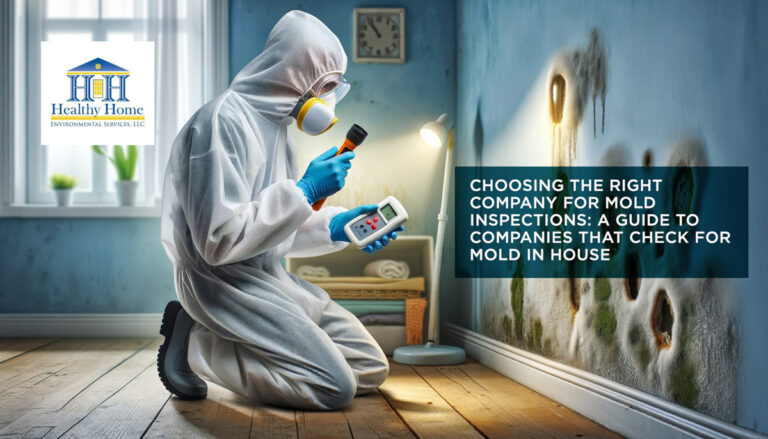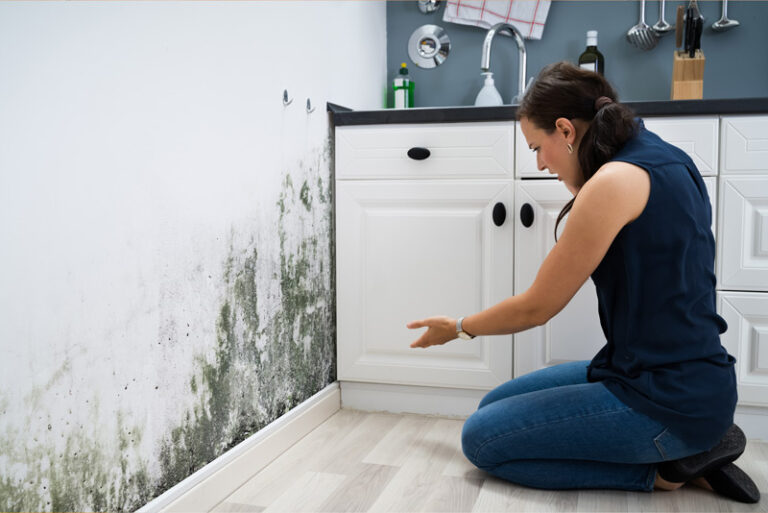Unveiling the Unseen: Detecting Mold Behind Walls
Mold is an unwelcome guest that can silently invade your home, gradually wreaking havoc both on the structure of your abode and the health of your loved ones. Its stealthy nature often makes it a challenging task to detect, especially when it decides to reside behind the sturdy walls of your dwelling.
The importance of early detection cannot be overemphasized, as it plays a pivotal role in mitigating the potential health and structural hazards posed by mold.
Key Takeaways
Aspect Details Health Hazards Respiratory problems, allergies, and potentially toxic reactions Structural Damages Weakening of materials, unpleasant odors, and potential property devaluation Detection Importance Early mold detection can mitigate health risks and reduce remediation costs
Recognizing the Silent Invader: Signs of Mold Behind Walls
One of the foremost steps in combating mold infestation is to recognize its presence. However, when mold chooses a clandestine spot behind walls for its growth, detection becomes a tad more complicated.
Here are some tell-tale signs that might indicate the presence of mold behind your walls:
- Unusual odors: Mold has a distinctive musty odor. If a part of your home smells musty or earthy, it’s a sign that mold is possibly lurking nearby.
- Discoloration and stains on walls: Mold often manifests itself through discoloration or stains on walls. Look out for unusual spots or color changes, especially in areas prone to moisture.
- Peeling or cracking of paint and wallpaper: The presence of mold may cause paint or wallpaper to peel, crack, or bubble.
- A history of water damage or flooding: If your home has had water issues in the past, there’s a higher likelihood of mold growth behind the walls.
- Health symptoms: Experiencing respiratory issues, allergies, or unexplained illnesses could be a sign of mold exposure.
For more in-depth information on professional mold detection, explore our Mold Testing services. Understanding the importance of professional mold inspection is crucial, learn more about it here
Delving Deeper: What Causes Mold Behind Walls?
Understanding the root causes of mold growth behind walls can empower homeowners to take proactive measures to prevent such occurrences. At the core of mold growth lies a trio of conditions: moisture, warmth, and organic material as a food source.
Let’s delve into some common household scenarios that can lead to mold growth behind walls:
- Leaks: Water leaks from plumbing or roofing systems can introduce moisture into the wall cavities, creating a hospitable environment for mold growth. Learn More!
- Poor Ventilation: Lack of adequate ventilation can lead to moisture build-up, especially in areas like bathrooms, kitchens, and laundry rooms.
- High Humidity: Elevated indoor humidity levels can foster mold growth. This is particularly pertinent in humid climates.
- Flooding: Severe water intrusion events like flooding can saturate building materials and trigger extensive mold growth if not promptly and properly dried out.
For an extensive guide on preventing mold growth, visit our page on Mold Prevention Strategies.
Key Insights
Factor Prevention Measure Leaks Regular inspection and immediate repair Ventilation Ensure proper ventilation systems in moisture-prone areas Humidity Maintain indoor humidity levels between 30-50% Flooding Prompt drying and professional assessment post-flooding
Taking Action: How to Prevent Mold Growth
Prevention is better than cure. This old adage holds particularly true when it comes to mold prevention. By adopting certain strategies and making informed choices, homeowners can significantly reduce the risk of mold growth behind walls.
Here are some actionable steps to prevent mold growth:
- Proper Ventilation: Ensure your home has adequate ventilation systems, especially in areas prone to moisture like kitchens, bathrooms, and laundry rooms.
- Maintain Indoor Humidity: Keep indoor humidity levels between 30-50% to discourage mold growth.
- Regular Cleaning: Clean surfaces regularly to remove organic materials that can support mold growth.
- Mold-Resistant Materials: Choose mold-resistant materials for your home construction and repairs.
For services that help in identifying and fixing leaks to prevent mold growth, check out our Leak Detection services.
Conclusion
Mold behind walls is a silent but potentially dangerous intruder. By staying vigilant, recognizing the signs, understanding the causes, and adopting preventive measures, homeowners can protect both their families and their properties from the repercussions of mold infestation.
Should you suspect mold growth in your home, early detection by a mold home inspector and remediation are key to resolving the issue effectively and minimizing risks.
If you’re seeking professional mold inspection and remediation services, feel free to Contact Us. We are here to provide comprehensive support, ensuring a safe and healthy living environment for you and your loved ones.










